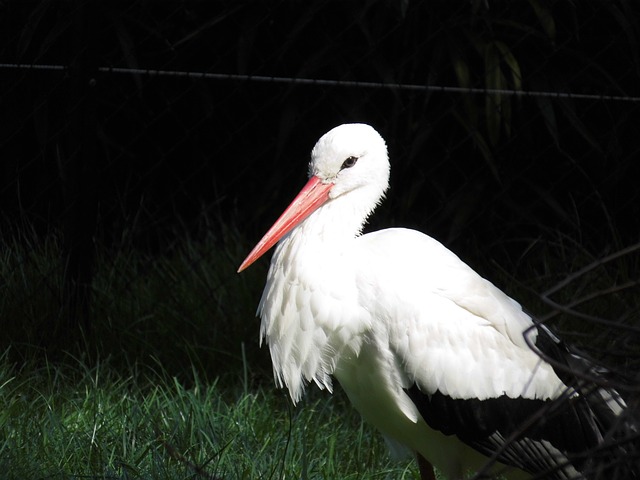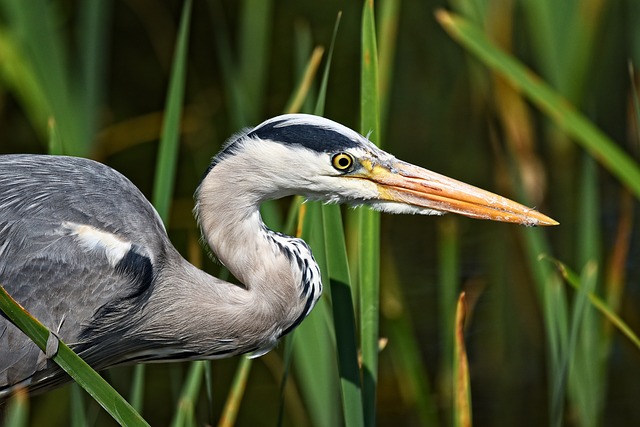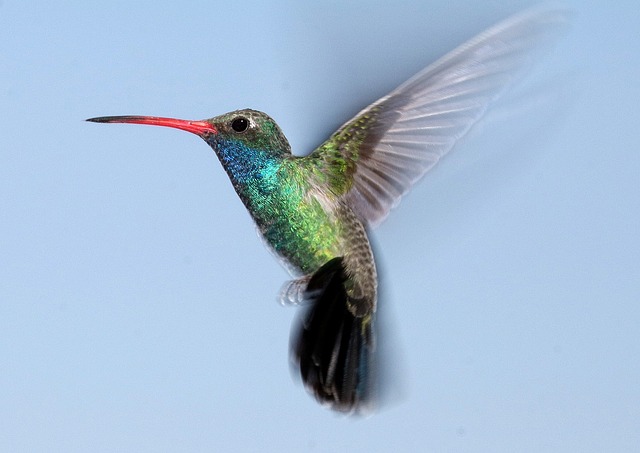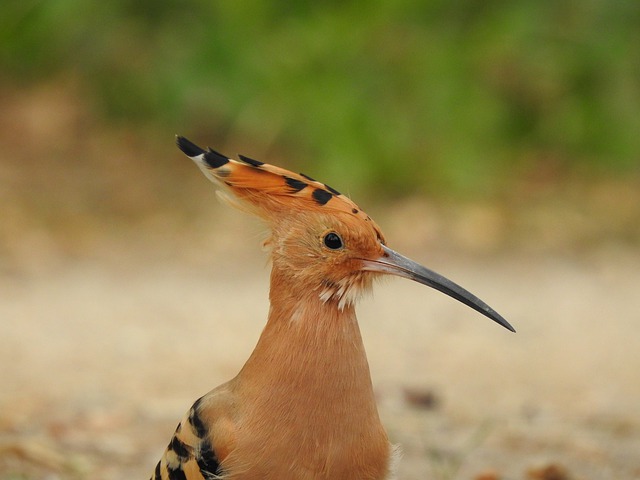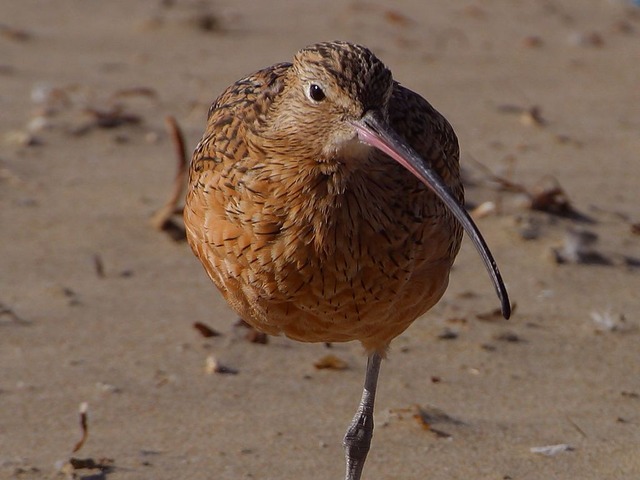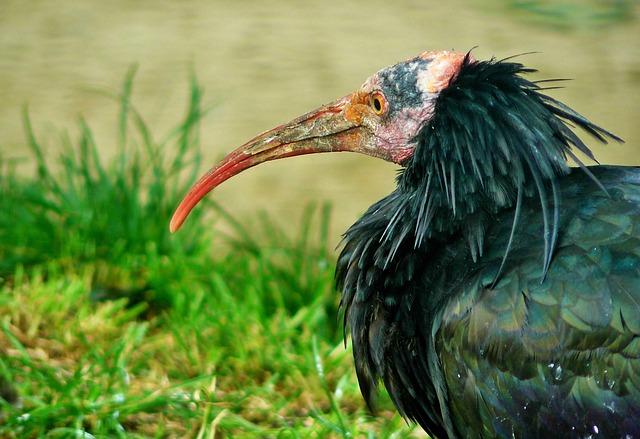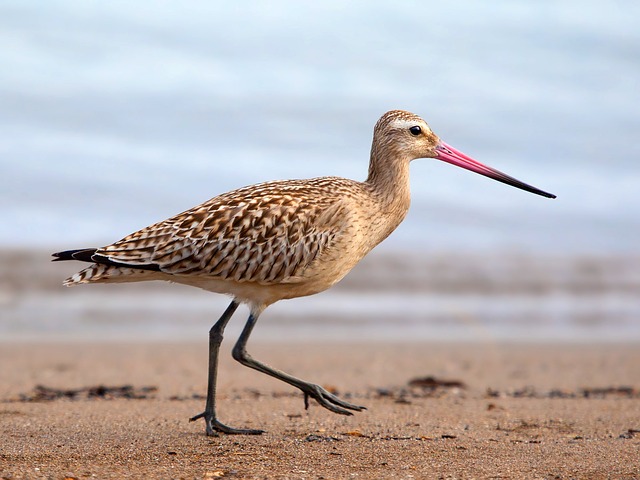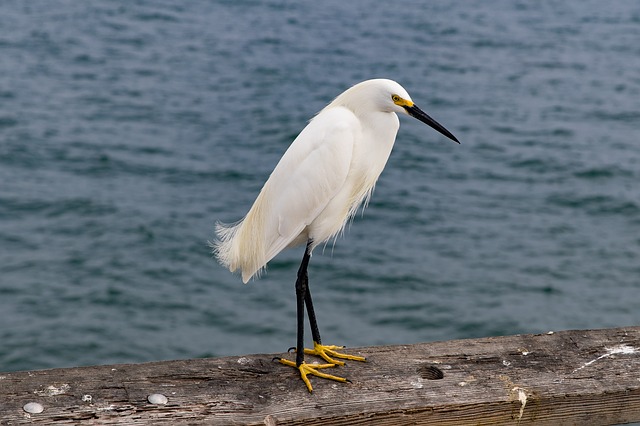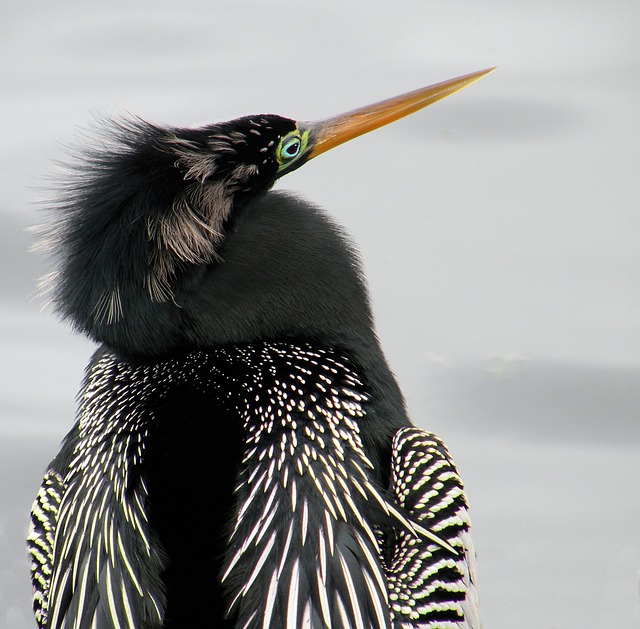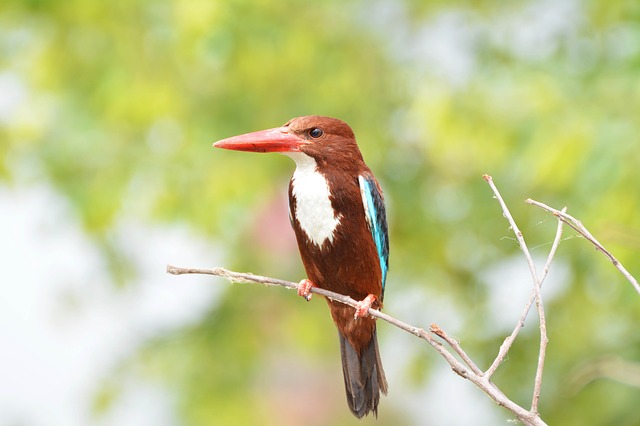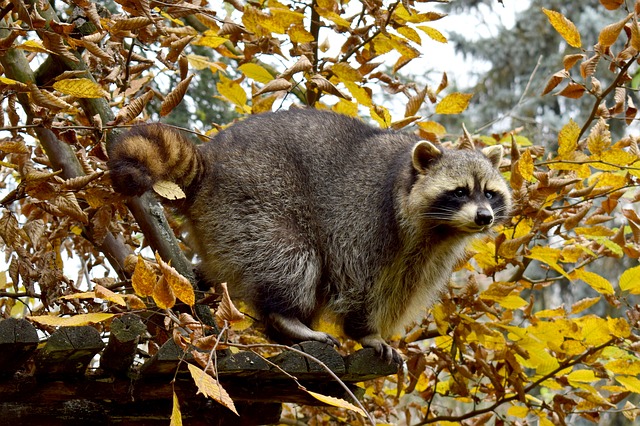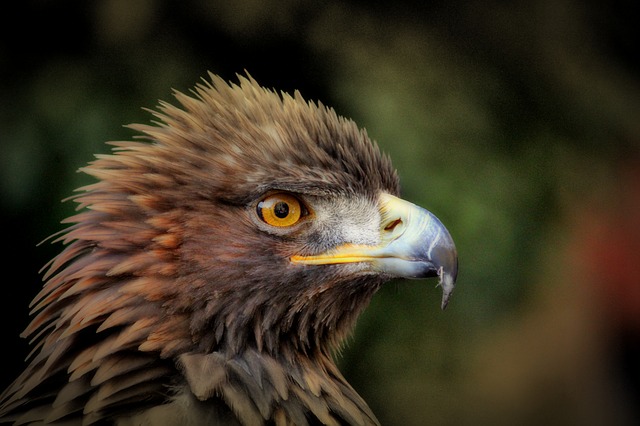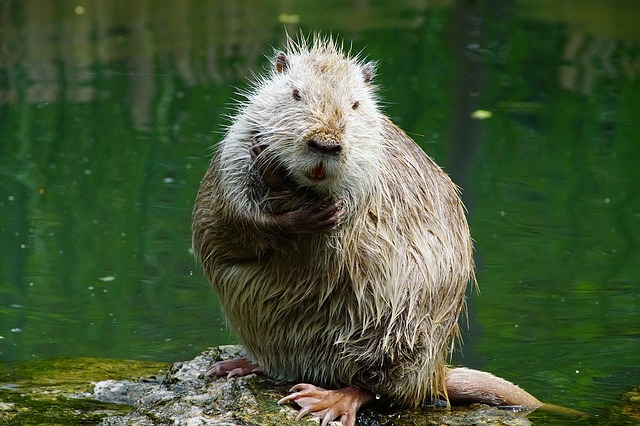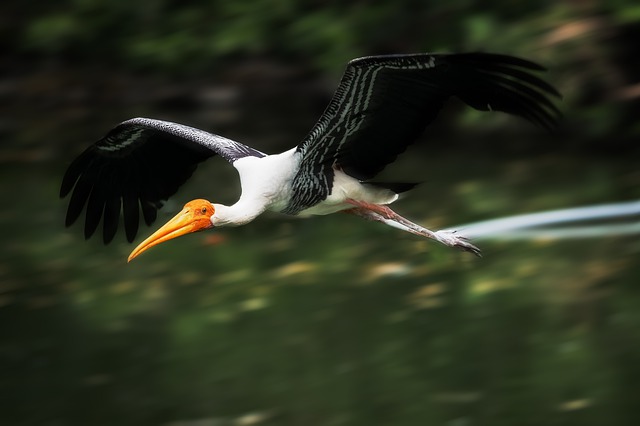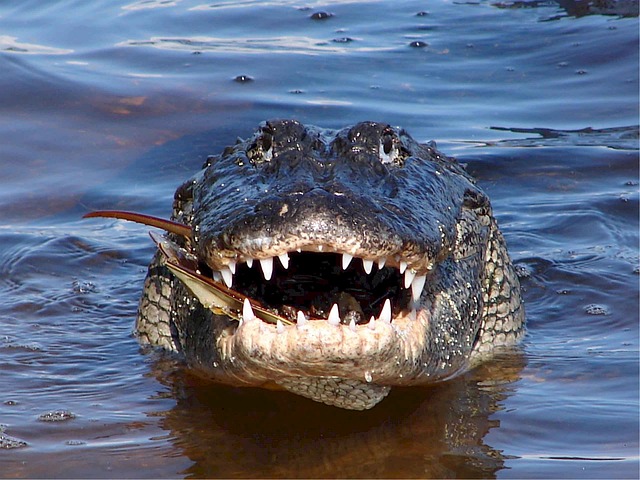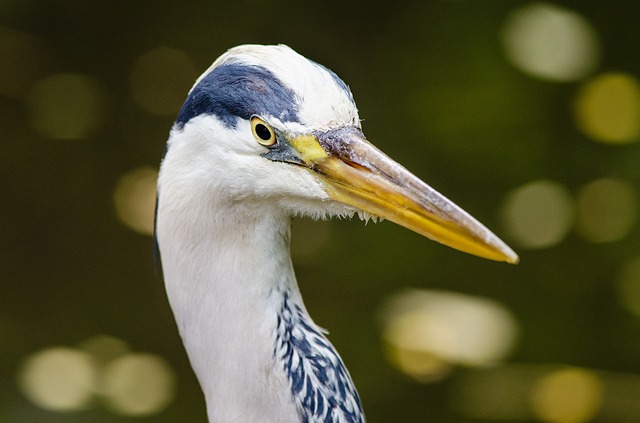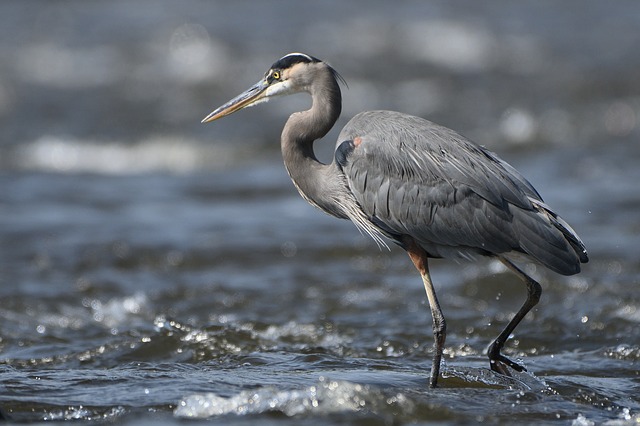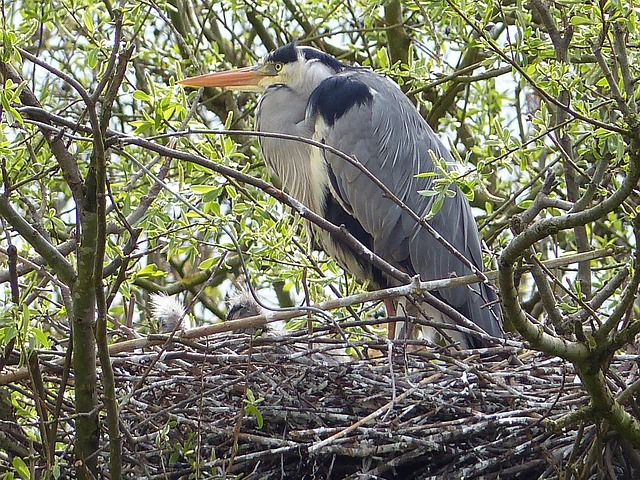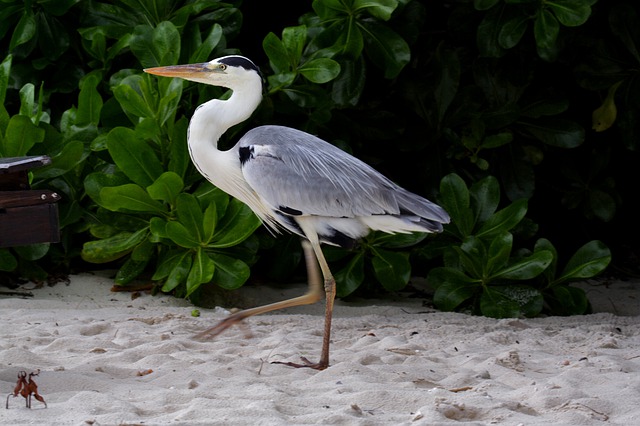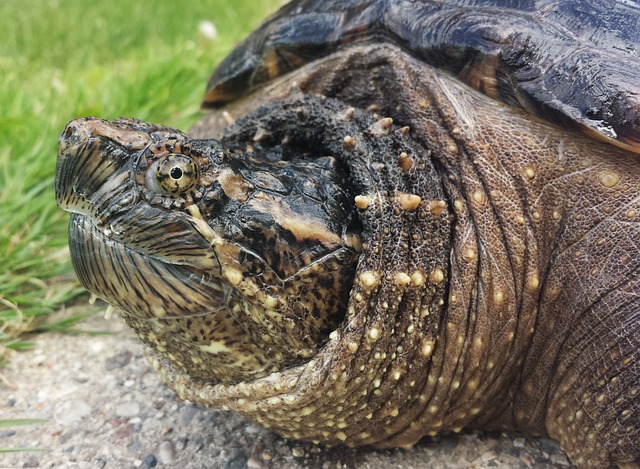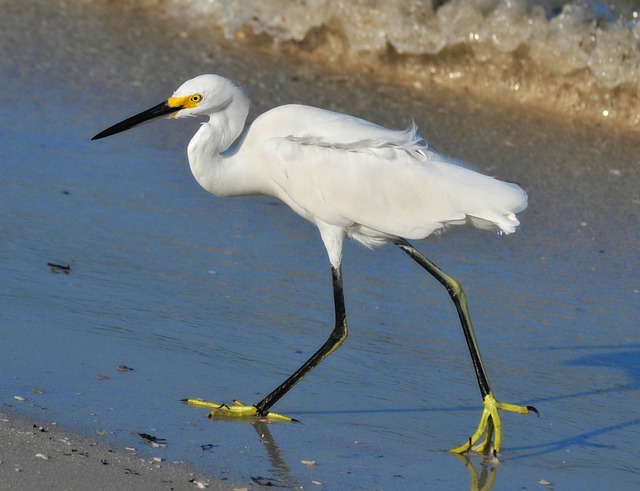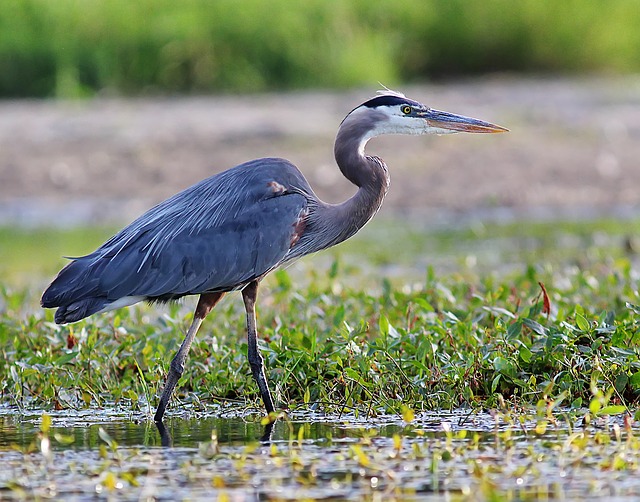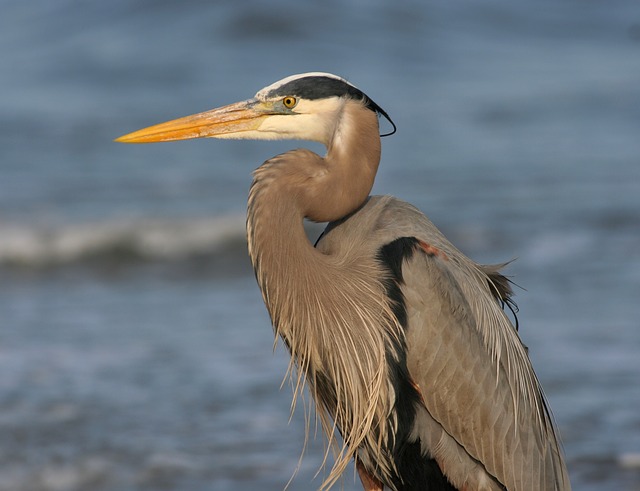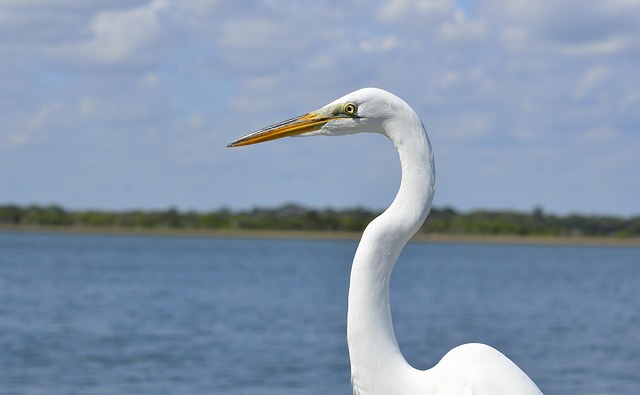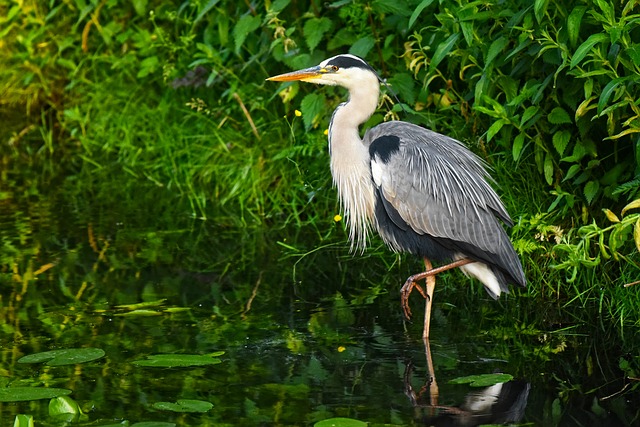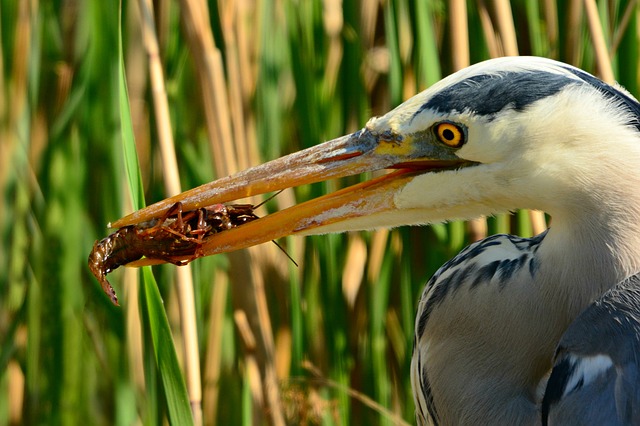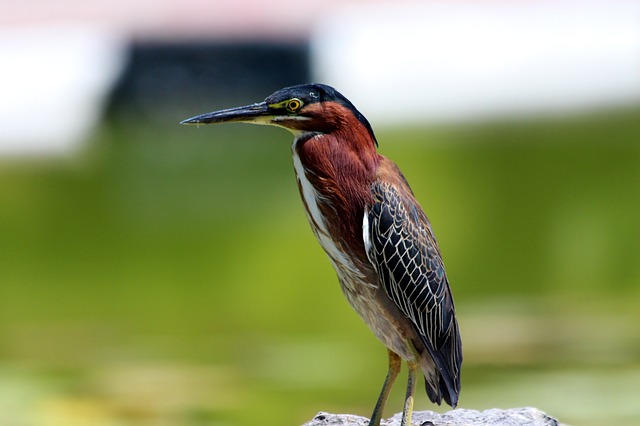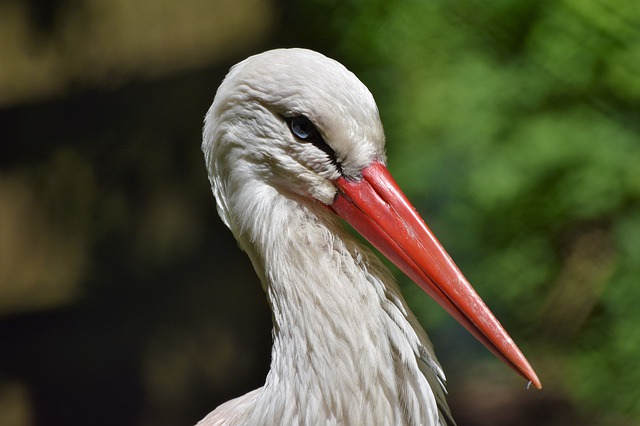
Bird beaks come in a wide range of shapes and sizes. Yet while they may not be as common as other types, birds with long pointed beaks have some of the most unique and specialized beaks in the world. So here’s a list of the longest and pointiest beaks in the business and what you’ll want to know about them.
Storks
Storks are large carnivorous water birds. They use their long pointed beaks to help them catch a variety of different prey. In fact, if a stork consumes any plant material at all it’s actually by accident.
Different stork species have beaks with different characteristics depending on their exact diet. For example, the marabou stork is an enormous bird with an equally huge beak. It uses it as both a massive pointy weapon to defend itself and also to help it scavenge the flesh from rotting animal carcasses.
Herons
Herons are a widespread group of birds that live on every continent except Antarctica. And they are expert fish, snake, and frog hunters using their long pointed beaks as a harpoon to impale their prey.
While majestic in appearance both the great blue heron and grey heron are actually considered pests by pond owners and fisheries because of their top-notch fish-catching abilities. However, because herons are territorial a heron decoy can often keep them away.
Hummingbirds
The hummingbird is a small bird with a long pointed beak that helps it to consume insects and also nectar from flowers. Some hummingbirds have quite uniquely-shaped beaks that evolved to help them extract nectar from specific types of flowers. Hummingbirds get their name from the humming sound produced by their fast-flapping wings.
Hoopoes
Hoopoes have a distinct crown of feathers on their heads. These long and pointed beak birds mainly feed on insects. many of which are considered pests by humans. And that means that they are well-liked and appreciated in many areas of the world. It’s no wonder that the hoopoe is the national bird of Israel.
Curlews
Curlews are medium-sized birds that have long necks and legs. There are nine species of curlew, and all have plumage which is a streaked or mottled grey or brown color, and long pointed beaks which are sickle-shaped. These wading birds use their downward-curving beaks to probe for crabs and worms.
Ibises
Ibises are wading birds with long legs. They feed in groups and use their long downward curving beaks to probe the mud for crustaceans. There are many different species of ibis with varying plumage. The most brightly colored of all is the scarlet ibis which is sometimes confused for the flamingo at a distance because of its pink color.
Godwits
Godwits are wading shorebirds that are often seen on tidal shorelines. They have long pointy beaks that allow them to dig deeply into the sand in search of mollusks and worms. Godwits got their name from their whistling call. There are four species of godwits, and all of them nest in the Northern Hemisphere.
Egrets
Egrets have all the same physical characteristics as herons including long and pointed beaks. And that’s because they are herons. All egrets are members of the heron family. Egrets are grouped together not based on any biological differences from herons but because of their mainly white plumage and the fact that they develop fine plumes during the mating season.
Anhingas
The anhinga is also known as the “water turkey,” or “snakebird”. It is a large diving bird with a long pointed beak. The anhinga hunts for its food underwater and it uses its sharp beak to impale fish and other small prey. For larger fish that are too big to impale the anhinga may instead use its beak to stab them multiple times.
Kingfishers
Kingfishers are brightly colored birds with long pointed beaks that are shaped like a dagger. And as their name suggests some kingfisher species do specialize in hunting fish. The beaks of these species are longer and narrower than kingfishers which consume other prey items. Kingfishers are well-known for their excellent eyesight.
Start Shopping for Birding Supplies!
Raccoon Pictures
Raccoons are easily recognizable by their black face mask and ringed tail. And there are many fascinating things about this intelligent nocturnal species. So we’ve compiled some of the best raccoon pictures to show you just how amazing and unique they are. Raccoon...
Eagle Pictures
Eagles are large powerful raptors with sharp talons and beaks. These apex predators are typically at top of the food chain and there are many interesting things about them. So we’ve compiled some of the best eagle pictures to show you just how amazing they are. Bald...
Nutria Pictures
Nutria are large semi-aquatic rodents from South America. In the United States where they were originally imported for the fur industry, they are an invasive species. Despite their pest status, there are many interesting things about them. So here are some of the best...
Stork Pictures
Storks are tall wading birds with long legs and necks. These amazing birds have many fascinating things about them. And we’ve compiled some of the top stork pictures to help show you just how interesting and beautiful they are. White Stork The white stork has a body...
Alligator Pictures
The American alligator is a large predatory reptile that inhabits the southeastern United States. It’s a fascinating animal with many interesting things about it. And we’ve collected some of the best alligator pictures to help show you just how amazing they are....
How Long Do Great Blue Herons Live?
The life expectancy of birds is known to be closely related to their size. So as the biggest heron species in North America, how long do great blue herons live? The average life expectancy for these large birds is around fifteen years. However, surviving their first...
Where Do Great Blue Herons Live?
The great blue heron is considered to be the most widespread heron in North America. So exactly where do great blue herons live? Here’s what you’ll want to know. Great Blue Heron Range The great blue heron is found throughout most of the North American continent. In...
Where Do Great Blue Herons Nest?
While many of us have seen great blue herons their nesting habits often remain a mystery to most people. That’s because they purposely nest in hard-to-reach places. So where do great blue herons nest? Here’s the answer. A Colony Nester Typically great blue herons nest...
Do Great Blue Herons Migrate?
Do great blue herons migrate? This is something many people wonder about, especially if they’ve seen a heron during the cold winter months. And the answer is both yes and no. Here’s what you’ll want to know. Great Blue Heron Range The great blue heron has a large...
Great Blue Heron Pictures
Few species of birds are as tall, elegant, and attractive as the great blue heron. So we’ve compiled some of the best great blue heron pictures for you to admire and help you to learn more about this amazing bird! Great Blue Heron Head The head of the great blue heron...
What Do Snapping Turtles Eat?
Many people are familiar with the fact that snapping turtles have an incredibly strong bite. They use their strong jaws and sharp beak not just for defense but also for catching food. So what do snapping turtles eat? Here's what you'll want to know. Snapping turtles...
Birds That Look Like Egrets
Egrets are predatory birds that hunt and live in a range of both freshwater and saltwater habitats. These birds are usually white, and have S-shaped necks, long legs, and dagger-like beaks. However, they are often mistaken for several other types of birds that look...
Birds That Look Like Storks
Storks are large wading birds with robust bills and long legs. These tall carnivorous birds are well-known for their wide wingspans and also for building huge nests. However, they are often confused with several other bird types that have a similar appearance. So...
Birds That Look Like Herons
Herons are tall birds with long slender legs and necks. And they often wade in the water when hunting for food. Yet there are several other types of birds that may be mistaken for them. To make things more confusing many of these birds also spend time in the water and...
Great Blue Heron Facts
The great blue heron is named for its size and the grey-blue color on its wings, stomach, and back. This species has many fascinating things about it. So here are the top great blue heron facts. It's The Largest North American Heron The great blue heron is a big bird...
Are There White Herons?
Are there white herons? This is something many people wonder especially after seeing a tall all-white bird. The answer is yes! And here’s a fast introduction to them. A White Color Morph Most people are familiar with the great blue heron, a large predatory and...
Great White Heron Facts
While many people are familiar with the great blue heron, they are often surprised to find out that there’s also a great white heron. There are many things you’ll want to know about this stunning bird. So here are the top great white heron facts. The Great White Heron...
What Animals Eat Herons?
Because of their size and long sharp beaks, it can be hard to imagine that herons have any natural predators. While they do, they definitely don’t have nearly as many predators as most other types of birds. So what animals eat herons? Predators Of Adult Herons For...
What Do Herons Eat?
Great blue herons are often seen slowly wading in shallow water hunting for food. You may have even spotted one of these large birds in your own backyard pond. This leaves many people wondering: “What do great blue herons eat?” And here’s everything you’ll need to...
What Do Green Herons Eat?
The green heron is a secretive and small heron species. What it lacks in size however it makes up for in intelligence. It is particularly well-known for how it uses its smarts when hunting for food. So what do green herons eat? Read on to find out. Meet The Green...
